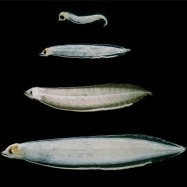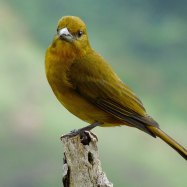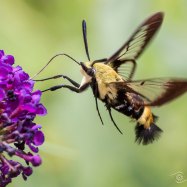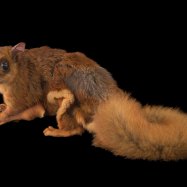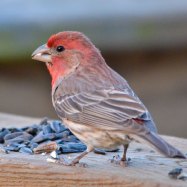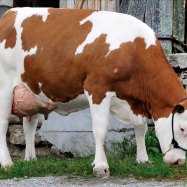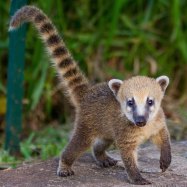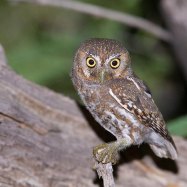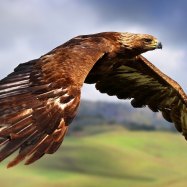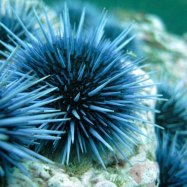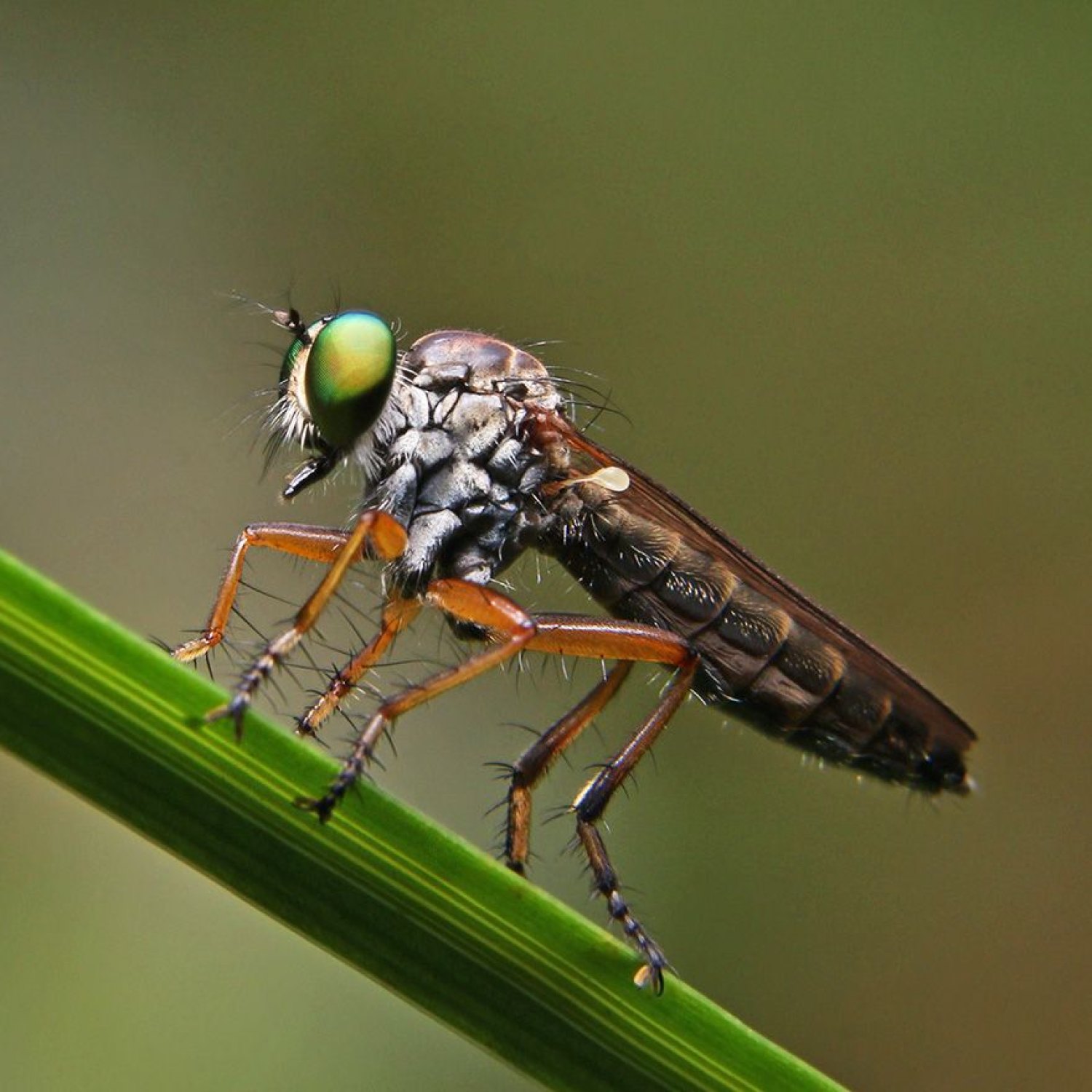
Robber Flies
Varies depending on the species, typically between 0.4 to 1.6 inches (1 to 4 cm)
Robber flies, also known as assassin flies, are fascinating creatures found in various habitats across the world. They belong to the Asilidae family and have a slender and long body with a narrow head and large eyes. These predators are known for their swift hunting skills, and their length can vary from 0.4 to 1.6 inches (1 to 4 cm), depending on the species. Keep an eye out for these remarkable flying predators! #RobberFlies #Asilidae #AssassinFlies
Animal Details Summary:
Common Name: Robber Flies
Kingdom: Animalia
Habitat: Varied, can be found in diverse habitats such as forests, grasslands, deserts, and wetlands
The Fierce and Fascinating World of the Robber Flies
The animal kingdom is full of unique and fascinating creatures, each with its own distinct characteristics and behaviors. Among them, the Robber Flies, also known as the Asilidae, stand out as one of the most interesting and formidable insects in the world. With their striking appearance and predatory nature, these flies have captured the attention of both scientists and nature enthusiasts alike. So, let's dive into the world of the Robber Flies and discover what makes them such special creatures Robber Flies.The Basics of the Robber Flies
First things first – what are Robber Flies? Well, they are a family of flies belonging to the Diptera order, also known as the true flies. They are one of the largest families of the Diptera, with over 7,000 species identified worldwide and still counting. These flies are commonly found in diverse habitats such as forests, grasslands, deserts, and wetlands, making them a ubiquitous species on every continent except for Antarctica.The Fascinating Features of the Asilidae
The anatomy of the Asilidae is truly unique and awe-inspiring. They have slender and long bodies with a narrow head and large eyes, giving them a somewhat similar appearance to bees or wasps. However, what sets them apart is their long, bristly proboscis, which they use for feeding. Their mouths have sharp, piercing mouthparts that they use to capture and feed on other insects, including bees, flies, and even spiders. These predatory abilities are what earned them the name "Robber Flies."Asilidae's coloration varies greatly depending on the species, ranging from dull brown and black to vibrant and metallic colors Redtail Catfish. Some species even have intricate patterns on their bodies, making them almost look like works of art. The colors serve as a type of camouflage, allowing them to blend in with their surroundings and ambush their prey effectively.
The Unique Habits and Behavior of Robber Flies
One of the most intriguing aspects of Asilidae's behavior is the way they catch their prey. Unlike other predatory insects that simply ambush their victims, robber flies are highly active and agile hunters. They have incredible vision and can detect their prey from a long distance away. Once they spot their prey, they will swoop in and attack, injecting them with a paralyzing venom and then sucking the fluids out of their bodies.The Asilidae flies also have an interesting method of courting and mating. Some species perform a ritual dance where the male will present the female with a suitable prey item. If she accepts the offering, they will then mate. This behavior is known as "nuptial feeding" and is a way for the male to ensure that the female is well-fed and healthy before mating.
The Importance of Robber Flies in Nature
Apart from their captivating appearance and behavior, Asilidae plays a vital role in maintaining the balance of certain ecosystems. As predators, they help control the population of other insects, keeping them in check and preventing them from becoming a nuisance or causing damage to crops. Additionally, some species of Asilidae are also important pollinators, carrying pollen from one flower to another as they search for food. This makes them essential for the reproduction and growth of various plant species.The Effects of Human Interference on Robber Flies
Unfortunately, like many other species in the animal kingdom, Asilidae is also facing various threats due to human activities. Habitat destruction, pollution, and the use of pesticides have all had a negative impact on their population. These flies are highly sensitive to changes in their environment and are facing a decline in numbers in certain regions.As humans, it is our responsibility to ensure the balance and preservation of nature's delicate ecosystems. By understanding the importance of species like the Robber Flies, we can take steps towards protecting and preserving their habitats.
Fascinating Facts About Robber Flies
- Some species of Robber Flies are known for their incredible speed and agility, being able to fly at speeds of up to 80 miles per hour.- These flies have exceptional eyesight, with some species having a visual range of up to 12 feet.
- Asilidae flies are found on every continent except Antarctica, making them a truly global species.
- Some species of robber flies have been known to mimic bees and wasps to trick their prey.
- While their venom is potent to their prey, it is not strong enough to harm humans.
In Conclusion
The world of the Robber Flies is truly fascinating, from their unique appearance and behavior to their important role in maintaining the balance of nature. While they may have a fearsome reputation as predators, they are an essential part of many ecosystems and deserve our appreciation and protection.As we continue to learn more about these amazing creatures and the impact of human activities on their population, it is crucial to remember our responsibility towards protecting and preserving them for future generations. So, the next time you spot a Robber Fly, take a moment to admire its beauty and appreciate the important role it plays in our world.

Robber Flies
Animal Details Robber Flies - Scientific Name: Asilidae
- Category: Animals R
- Scientific Name: Asilidae
- Common Name: Robber Flies
- Kingdom: Animalia
- Phylum: Arthropoda
- Class: Insecta
- Order: Diptera
- Family: Asilidae
- Habitat: Varied, can be found in diverse habitats such as forests, grasslands, deserts, and wetlands
- Feeding Method: Predatory, they capture and feed on other insects
- Geographical Distribution: Found worldwide on every continent except Antarctica
- Country of Origin: N/A
- Location: Various habitats
- Animal Coloration: Varies greatly depending on the species, ranging from brown and black to bright and metallic colors
- Body Shape: Slender and long with a narrow head and large eyes
- Length: Varies depending on the species, typically between 0.4 to 1.6 inches (1 to 4 cm)
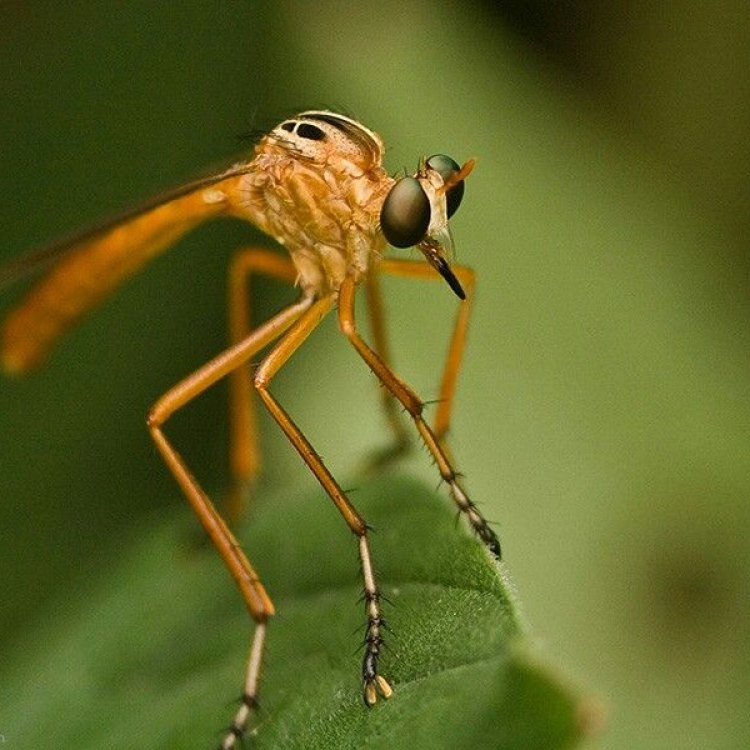
Robber Flies
- Adult Size: Varies depending on the species, typically between 0.4 to 1.6 inches (1 to 4 cm)
- Average Lifespan: Varies depending on the species, but usually around 1 year
- Reproduction: Sexual reproduction
- Reproductive Behavior: Males attract females through courtship displays and mating rituals
- Sound or Call: Robber flies do not produce sounds or calls
- Migration Pattern: Some species of robber flies are migratory
- Social Groups: Solitary
- Behavior: Highly agile and powerful fliers, spend most of their time perched on vegetation or in flight
- Threats: Habitat loss, pesticides, and climate change
- Conservation Status: Not evaluated by the IUCN
- Impact on Ecosystem: They help control populations of other insects by preying on them
- Human Use: No direct human use
- Distinctive Features: Long, slender body, large eyes, bearded face, and strong, long legs
- Interesting Facts: 1. Robber flies are voracious predators and can capture prey larger than themselves. 2. They have a unique feeding mechanism where they inject enzymes into their prey to liquify their insides before consuming them. 3. Some species of robber flies have a metallic green or blue coloration, making them visually striking. 4. They have excellent vision and can detect movement from a distance. 5. Robber flies are considered beneficial insects as they help control populations of pests and other harmful insects in agricultural and natural ecosystems.
- Predator: Some species of birds, lizards, and other insects
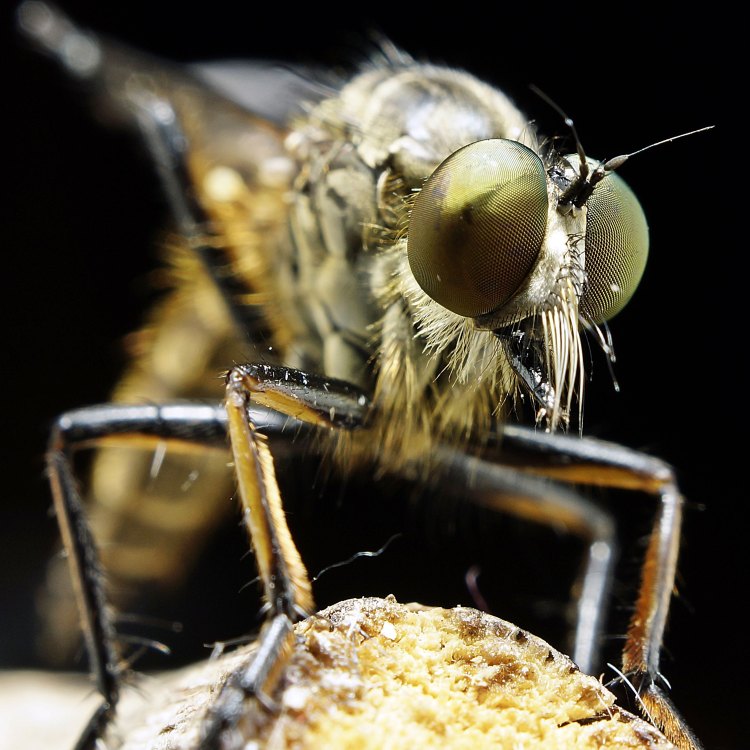
Asilidae
The Fascinating World of Robber Flies: Nature's Aerial Predators
The world of insects is incredibly diverse, with over a million different species known to mankind. Among them is a group of insects that is often overlooked and underestimated – the robber flies. These fascinating creatures are not only highly skilled aerial predators, but they also have unique reproductive behaviors and distinctive physical features that make them stand out in the insect kingdom.Robber flies, also known as assassin flies or bee killers, belong to the family Asilidae and are found all over the world, except in polar regions PeaceOfAnimals.Com. They are typically small, measuring between 0.4 to 1.6 inches (1 to 4 cm) in length, with a slender and elongated body. Their size may vary depending on the species, but they all have certain common features that make them easily recognizable.
One of the most distinctive physical features of robber flies is their large eyes. These predatory insects have excellent eyesight and can detect movement from a distance, making them highly efficient hunters. Their eyes also have a unique structure that allows them to see in different lighting conditions, including low light and UV light, giving them a significant advantage over their prey.
Another striking feature of robber flies is their bearded face, which is covered in dense, hair-like bristles. These hairs not only serve as camouflage but also help protect the fly's face from struggling prey River Otter. They also have long, slender legs that are armed with sharp claws, making them agile and powerful fliers.
Robber flies may come in a range of colors, from dull brown and grey to bright metallic green or blue. This variation in color is often associated with different species and can also serve as a form of camouflage in their natural habitats.
While their physical features are impressive, it is their behavior that truly sets them apart from other insects. Robber flies are solitary creatures, spending most of their time perched on vegetation or in flight. They are highly agile, able to change direction in mid-air and execute impressive aerial maneuvers.
Their predatory nature is what earned them the name "robber fly." These insects are voracious hunters and will capture prey that is even larger than themselves. They primarily feed on other flying insects, such as bees, wasps, and dragonflies, but are also known to prey on spiders and other small insects.
What makes robber flies unique is their feeding mechanism. They have a long, needle-like proboscis that they use to inject enzymes into their prey. These enzymes help to liquify the insides of the prey, making it easier for the fly to consume them. This ability is what makes robber flies such successful predators, as they can feed on a wide range of prey without needing strong jaw muscles or venom like many other predators.
Robber flies are also sexually reproducing insects, with males attracting females through courtship displays and mating rituals. The males often perform aerial acrobatics and offer gifts to females, such as prey or plant materials, to win their favor. Once the female is receptive, mating occurs, and the female lays eggs in the soil or decaying vegetation.
The lifespan of a robber fly varies depending on the species, but it is generally around one year. However, their reproductive behavior is not the only thing that differs among species. Some species of robber flies are migratory, traveling long distances in search of food and suitable habitats. They may also migrate to avoid harsh weather conditions or to find a mate.
Unfortunately, like many other insect species, robber flies face numerous threats in their habitats. Habitat loss, caused by human activities such as deforestation and urbanization, is a significant issue for these insects. Pesticides and climate change also pose a significant threat to their survival, as they rely on certain environmental conditions to thrive.
Despite these challenges, the conservation status of robber flies is still not evaluated by the International Union for Conservation of Nature (IUCN). However, their role in maintaining ecological balance and their unique physical and behavioral traits make them an essential part of natural ecosystems.
One of the most significant impacts of robber flies on the ecosystem is their role in controlling populations of other insects. They are considered beneficial insects, as they help keep pest populations in check, making them an important ally for farmers and gardeners. In fact, some species of robber flies are now being studied for their potential as natural pest control agents in agriculture.
While robber flies may not have any direct use to humans, their presence in agricultural and natural ecosystems is crucial for maintaining a healthy balance. They also serve as a food source for some species of birds, lizards, and other insects, making them an integral part of the food chain.
In addition to their important role in the ecosystem, robber flies also have a few interesting facts that make them even more fascinating. For instance, they have been observed capturing prey three times their size, displaying their incredible hunting abilities. They also have the ability to fly in gusty winds and even cling onto moving vehicles, showcasing their impressive agility and strength.
In some cultures, robber flies are seen as symbols of courage and bravery, thanks to their predatory skills and fearless nature. In ancient Greek and Roman mythology, the god of war, Mars, was often depicted with a helmet adorned with a robber fly.
In conclusion, robber flies may be small and often overlooked, but they are a vital part of the insect kingdom and play a crucial role in maintaining ecological balance. Their unique physical features, hunting abilities, and reproductive behaviors make them stand out in the world of insects. However, their habitats are facing numerous threats, and it is essential to raise awareness about their importance and take steps to protect them. Let us appreciate and admire the fascinating world of robber flies, nature's aerial predators.
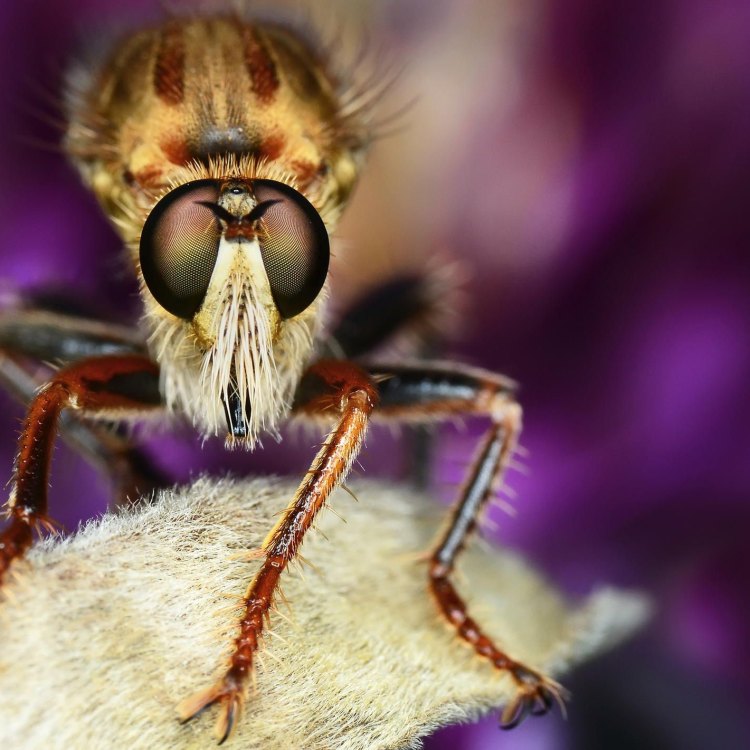
The Fierce and Fascinating World of the Robber Flies
Disclaimer: The content provided is for informational purposes only. We cannot guarantee the accuracy of the information on this page 100%. All information provided here may change without prior notice.

